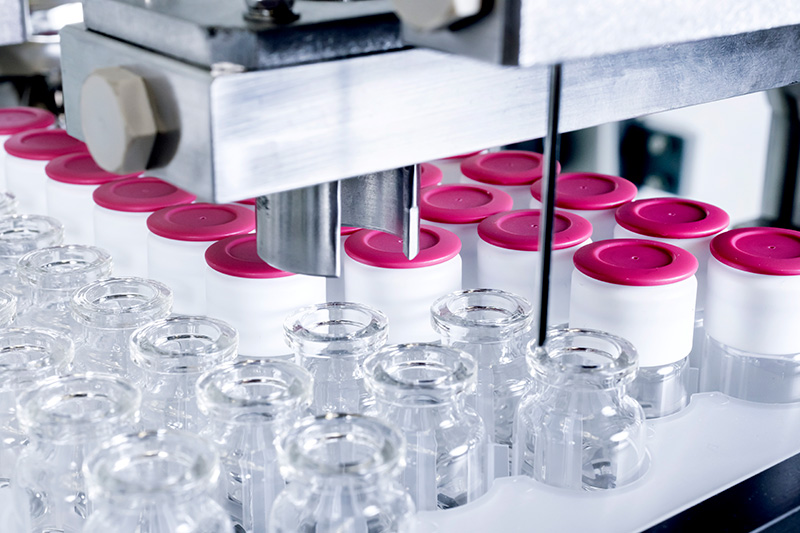Steriline, the Italian aseptic processing manufacturer, welcomed visitors at CPhI Worldwide 2021 in Milan, Italy.
Steriline presented its new Robotic Nest Filling Machine (originally intended for syringe-filling only), working with the RayDyLyo solution (the all-in-one closure system developed by ARaymondLife which integrates a plastic push-fit cap as an innovative alternative to aluminium caps) and the SG EZ-fill vials in nest by Stevanato Group.
The features of the RayDyLyo closure system are far more suitable to produce small and medium volumes in R&D laboratories or pilot lines, which is why, compared to others, Steriline chose to develop a solution working with RTU (ready-to-use) containers. Customers generally request flexible and high-speed equipment for R&D processes, and this solution exceeded expectations thanks to an extremely simple and fast changeover that could be executed in a reasonable timeframe.
"The development of the machine itself was not too complex since our stoppering and capping system could be very easily adapted to the RayDyLyo system," says Giovanni Panzeri, Area Sales Manager MEA at Steriline. "Of course, the cap feeding system and stopper / cap pick-and-place unit must be adjusted to the physical characteristics (such as dimensions and weight) of the new caps, which means this must be considered in the design of the equipment."
“The pre-sterilized SG EZ-fill vials provide a superior level of quality, compliance and patient safety." states Fabio Bertacchini, Product Management Director at Stevanato Group "Available in Nest&Tub or tray configuration to accommodate different customers’ needs, they are an ideal solution both for clinical batches and commercial production. SG-EZ fill vials seek to maximize filling efficiency, preserve the glass mechanical resistance and reduce particle generation, streamlining production operations."
The original plan to present the machine to international customers at different shows throughout late 2020 and mid-2021 had to be changed because of the pandemic. Thanks to the currently available software applications for remote working, which Steriline already uses for virtual tours and remote-FATs (Factory Acceptance Test), the machine was presented to several customers anyway during last year and half, collecting positive feedback and even some orders.
"The pandemic has accelerated the demand for flexible filling equipment and RTU packaging solutions, hence our collaboration with Steriline and Stevanato Group. Several joint projects are ongoing. Our RayDyLyo device is a breakthrough innovation that has already been adopted by some of the world's largest pharmaceutical companies," confirms Pascal Sircoulomb, Business Development Manager at ARaymondLife.
“RayDyLyo's characteristics are consistent with the increasing demand for highly flexible units for low capacity and volume lots, using glass packaging and RTU closure systems that often involve manual operations," adds Federico Fumagalli, Chief Commercial Officer at Steriline. "With the RayDyLyo closure system, it is no longer necessary to have end-of-line capping, which needs to be done in a separate sterile environment. As an example, in case of freeze-dried products, it is possible to finalise vial closure in a sterile environment and thus minimise contamination risks linked to manual operations, with the advantages of reduced line footprint and of lower CAPEX."

Fig. 2 - Filling and capping process detail in the RNFM for Lab with RayDyLyo closure system
In addition to the Robotic Nest Filling Machine (RNFM1-Lab), Steriline also exhibited a Powder Vial Filling and Capping Machine (PVFCM100) and a Robotic 3D Control Picking Solution.
The first solution is aimed at the primary packaging of powdered drugs in very large batches. It is equipped with two Auger Filling Heads, engineered at Steriline’s Labs, with a total production capacity of 100 vials/minute.
The Robotic 3D Control Picking Solution consists in a robotic arm equipped with 3D vision sensors and an IR Stereoscopic vision system that guarantee the best performance in terms of detection of caps position and orientation. Every time and for each single cap, the robot generates the best trajectory to pick it up correctly.
